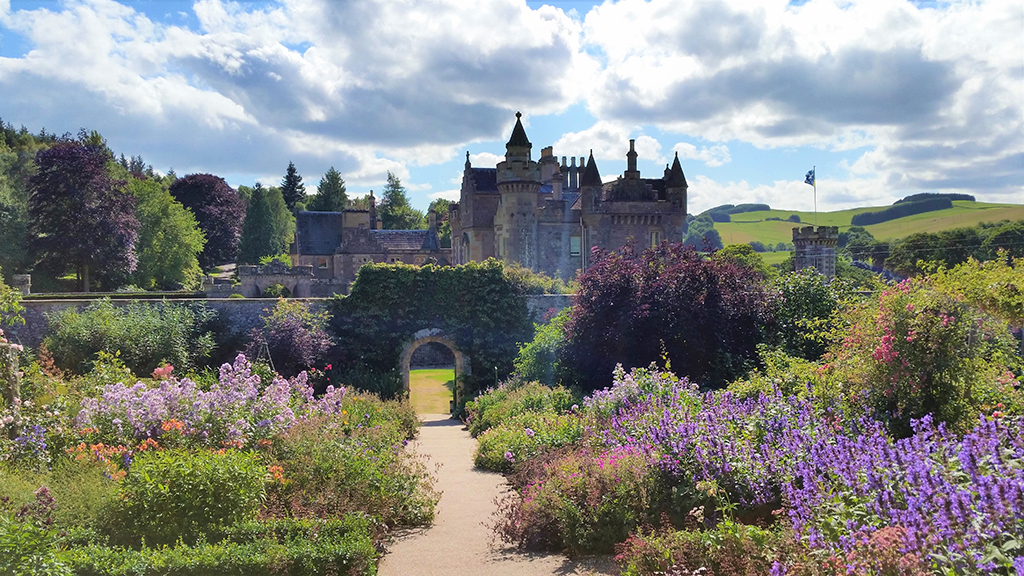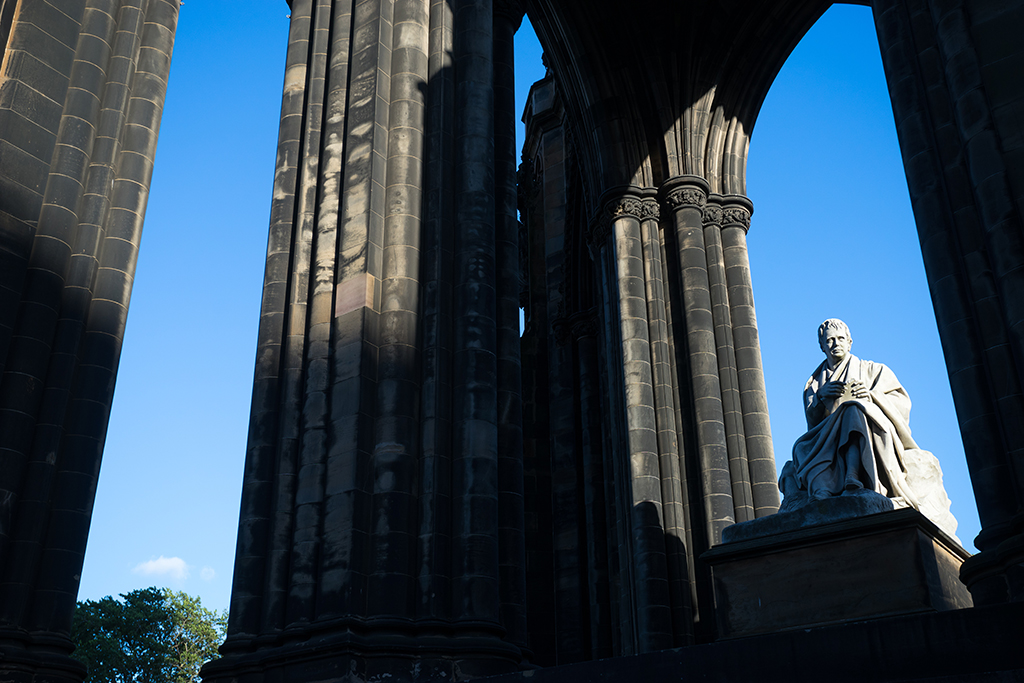No author has ever had as much influence and impact as Sir Walter Scott.
With his narrative poems and his series of stories, latterly called the Waverley Novels, he did not just change what the world thought of Scotland, he radically transformed literary culture.
When I wrote about his long shadow in my book Scott-Land, I facetiously subtitled it: The Man Who Invented A Nation. If anything that was an underestimation. He did not just invent what we think of as Scotland; but to a great extent England as well.
Scott was born in 1771, on the cusp between what we think of as the Age of Enlightenment and the Age of Romanticism and Revolution. He suffered from poliomyelitis as a child, and his treatments perfectly capture his ambiguous position between the progressive and the traditional.
His mother’s family were part of Edinburgh’s medical establishment, and the young Scott was treated with innovative new ‘galvanic’ therapy where his leg was electrocuted.
When this proved ineffective, he was sent to his father’s family in the Scottish Borders to recuperate and his leg was wrapped in the caul of a lamb, an old superstition of a cure. Throughout his life he would vacillate between thrilling at the past and being in awe of the present.
The house he built using the profits of his literary work, Abbotsford, was both a faux-medieval fantasy and the most technologically advanced residence in Scotland, complete with gas-lighting and pneumatic bell-pulls.
Scott’s literary career began with translating the most fashionable new German writing – Goethe in particular – and collecting ballads which still existed only in the oral tradition.
The success of The Minstrelsy Of The Scottish Border was such that it inspired Scott to create his own modern version of an ‘auld sang’; The Lay Of The Last Minstrel. Compared to the leaden heroic couplets of his contemporaries, Scott’s verse was lithe and light, gothic and gory.
The success of his first poem was so phenomenal that he was offered the first ever ‘advance’, with the publisher Constable offering 3,000 guineas for his next work, sight unseen. Whereas at the end of the 18th century, the pinnacle of literary achievement was still the epic poem, Scott shifted opinion towards the novel as the pre-eminent form. From Balzac to Tolstoy, Manzoni to the Brothers Grimm, the Brontes to Fenimore Cooper, almost every writer of note in the 19th century acknowledged Scott. Thomas Hardy even said, when reading Homer, that he was almost in the same class as Scott.

Abbotsford House, located in the Scottish Borders, was home to Sir Walter Scott
It was in 1814 that Scott turned to prose, writing anonymously. He was even more successful as a novelist. Jane Austen said that Scott ‘had no business writing novels, especially good ones’. Although he persisted with the ruse of not being the writer – his works came out variously as ‘by the Author of Waverley’, or ‘Tales of My Landlord’, and he was commonly referred to as ‘the Great Unknown’ even though it was an open secret that Scott was the author.
In both his poems and his novels, Scott reimagined Scotland. When Samuel Johnson and James Boswell journeyed through Scotland the generation beforehand, it had been an anthropological expedition into the primitive, and the landscape was ‘horrid’. Under Scott’s influence, it became ‘sublime’, like a painting by Scott’s favourite artist, Salvator Rosa. Instead of Jacobites being treacherous fifth columnists, Scott reimagined them as mistaken idealists. Highlanders were not rude barbarians but noble savages.
Sir John Sinclair, who compiled the Statistical Account Of Scotland, provides tangible evidence of Scott’s influence: in the year after the publication of The Lady of the Lake, takings at the tollbooth to Loch Katrine, where the poem is set, tripled. Scott made Scotland a tourist destination.
He also changed Scotland’s built heritage. There would be no Waverley Station, no Waverley Bridge, no Waverley Steps, none of the 92 streets in Britain called Waverley Road had it not been for the Waverley novels. The Scott monument in Princes Street is the largest monument to an author in the world. Certain buildings – St Ronan’s Well in Innerleithen, the Fair Maid’s House in Perth – were created after the novels in which they appear were published.
Scott’s imagination was literally built over Scotland. Throughout his work, Scott is interested in how history changes. In his second great poem, Marmion, he wrote: ‘And o’er the landscape as I look / Nought do I see unchanged remain’. In the ‘Postscript Which Should Have Been A Preface’ to Waverley he said: ‘There is no European nation, which, within the course of half a century, or little more, has undergone so complete a change as this kingdom of Scotland’.
While admitting, and grateful for, the benefits of change, Scott wanted to preserve the best of the past. He was a committed Unionist, but his belief in the Union was not for a homogenous ‘Britain’, but an equitable alliance between a Scotland proud of its Scottishness and an England secure in its Englishness.

Sir Walter Scott’s monument in Edinburgh is largest dedicated to a writer anywhere in the world
In many of his works, Scott presents a clash of values – Jacobites and Hanoverians, Roundheads and Cavaliers, Normans and Anglo-Saxons, Covenanters and Redcoats – and suggests that out of that conflict emerges a new, stronger synthesis. It might seem a little pretentious to say so, but Scott got to Hegel’s idea of a ‘World-Spirit’ emerging out of such ideological battles before the German philosopher did. It was, fundamentally, a liberal vision of society.
When one sees the Waverley Novels lined up with their uniform bindings, it is easy to think of them as somehow similar to each other. Nothing could be further from the truth. Scott was a great innovator, and in each of his novels he attempts something new.
They move from third person to first person, comedy to tragedy, Scotland to Europe, male hero to female protagonist. It is no wonder that he was compared to Shakespeare in his lifetime more than any author before or since.
Although most commentators think that Scott was at his best when writing about Scotland, he was as important in imagining England. He put chivalry at the centre of England’s idea of itself in Ivanhoe, which also has the scene where Robin of Locksley splits the Sheriff of Nottingham’s bull’s eye arrow with his own.
It is in Scott that we find Raleigh putting down his cloak for Queen Elizabeth, and Scott coined the phrase ‘War of the Roses’ for what had been known as the Contention of York and Lancaster. He is as significant in imagining England’s mythology as Scotland’s.
Scott is always surprising. In Ivanhoe he makes Isaac of York one of the first non-satirical, non-stereotypical Jewish characters in fiction. He does the same for Islam with Saladin in The Talisman and for the Hindu faith with Tippoo Saib in The Surgeon’s Daughter. His working class characters are never depicted in a condescending fashion – in contrast, say, with Dickens.
The only class which Scott regularly writes in a tongue-in-cheek fashion is the class he belonged to: the Edinburgh legal establishment.
There is a generosity of spirit about Scott, an openness about the future and a respect for the past, which one dearly hopes reflects the best of Scotland.
TAGS

